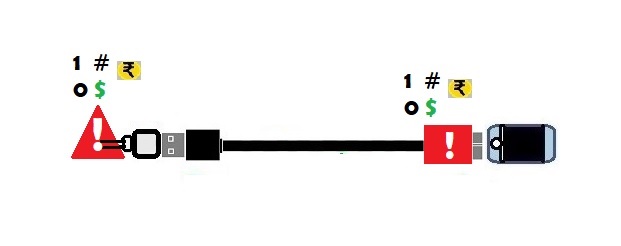During travel, many passengers charge their phones or other devices using public charging stations or borrowing other unknown co-passengers’ chargers or charging cables. That unknown passenger could be a scammer too. Nowadays, the same cable is used for transferring data and supplying power. To perform the attack, scammers infect USB ports or charging cables in public areas or share an infected charging cable or charger with a co-passenger. An Infected charging port or cable is used to steal data or install malware on the devices connected to it. This type of scam is called “Juice Jacking”. Though at present, the researchers are dividing whether Juice Jacking is a real issue or media hype. But in my view, scammers are going to use this kind of technique in the near future. I think all public charging ports or cables should be capable of only providing power supply. After all, they are built for charging purposes only. Most devices have Bluetooth, so people already have this option to transfer a sufficient chunk of data in case of some emergency.
In the interest of consumers and to reduce e-waste, India will adopt USB Type-C as the standard charging port by March 2025. Now, USB Type-C is capable of both transferring data and supplying power. But it will be better if USB Type-C charging ports at public charging stations are capable of power supply only. At the personal level, people can use USB Condom, a protective equipment that fits between the charging cable and the USB port of the device. That equipment protects the devices from unwanted outcomes that include juice jacking and other bad actors.



